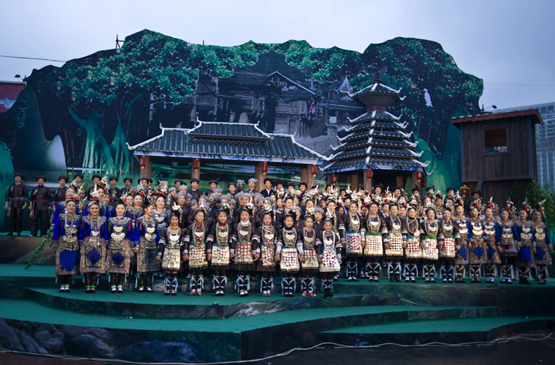In Guizhou, the striking feature of its demography is the multiethnic structure. Based on a survey of the distribution of ethnic minority people in China, Guizhou has been identified as the main residential area in the whole country for three minority groups---Miao, Buyi, Dong.
The Culture of the Miao Nationality in Guizhou
With a long history and a splendid culture, the Miao nationality is a Chinese minority group with a large population. Guizhou has the most population of the Miao Nationality in China. In Guizhou, most of them dwell in Miao and Dong Autonomous Prefecture of Southeast Guizhou. With most population of the Miao Nationality, Guizhou is the area in which the Miao culture is protected best. As the total population of the Miao Nationality in Guizhou accounts for more than half of the whole population of this nationality in China, Guizhou is widely considered as the Base Camp of the Miao Nationality
The Miao Nationality is used to living in groups and thus villages of different sizes come into being. The Miao villages are often surrounded with green trees and dotted with layers of terraces. In most cases, their houses are wooden structured with two stories. The houses in the hillside are mainly built leaning against the rock with wooden legs. The front part is several storied and the third one is used for storing corns and other crops.
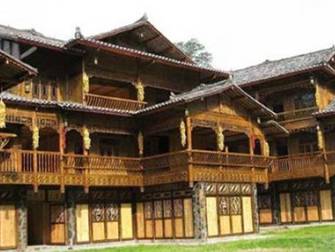
For those villages in cold hilly areas where rice couldn’t grow, other grains would replace rice and corns. Traditionally, Miao Food features sour and spicy tastes. Miao people also like drinking wine. Every family knows how to make wines for all kinds of ceremonies.
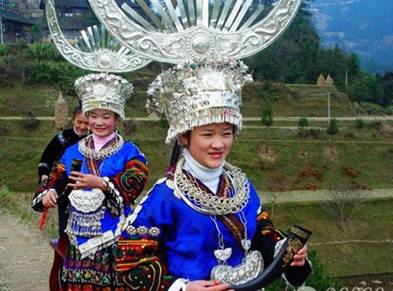
There are a variety of costumes for the Miao Minority. Miao people have more than 170 costumes as their cultural codes. These codes were born under different background of different areas and affected by different customs, religious beliefs and community systems.
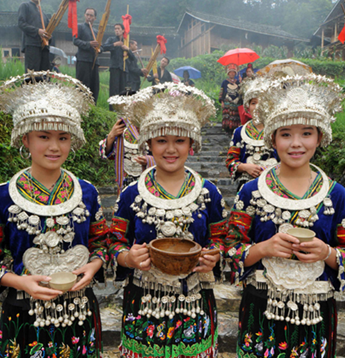
The Miao Nationality is noted for singing and dancing. With all movements following the rhythm, the grand flying songs performed by thousands of people in Southeast Guizhou are especially amazing.
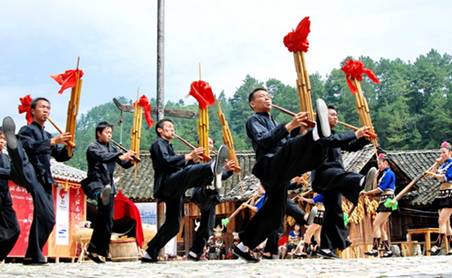
Of all the traditional minority festivals, 60 percent or more are festivals of the Miao people, mainly including the Siyueba, the Miao’s New Year, the New – Rice – Tasting Festival, the Sisters’ Festival, the Lushen Festival and the Dragon Boat Festival.
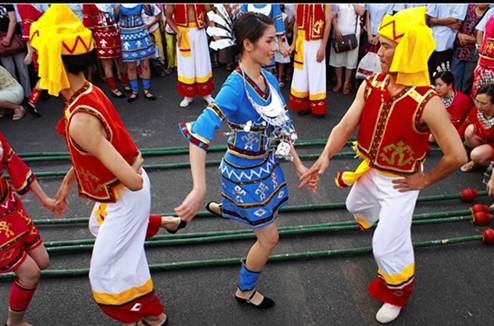
The Culture of the Buyi Nationality in Guizhou
Among all the Buyi people in China, more than 95 percent live in Guizhou. As the second largest minority group in Guizhou, the population of the Buyi Nationality, which is only smaller than the Miao Nationality, are mainly distributed in Qiannan (South Guizhou) and Qianxian (Southwest Guizhou) Buyi & Miao Autonomous Prefectures while a few are scattered in other districts or cities like Anshun, Tongren, Zunyi, Bijie, Liu Panshui and Guiyang.
The Buyi people live together in an open area or in a valley beside mountains or rivers. They prefer storied buildings, often with three stories. In some areas, some special Buyi houses are supported by wooden stilts.
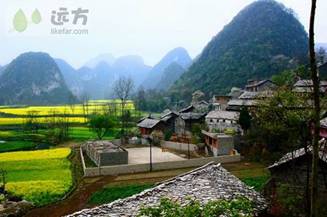
The Buyi people prefer blue, green, black and white costumes. The men’s costumes are simple in style. The women’s costumes are unique, wearing trousers and dresses. The elderly wear short collarless shirts with buttons down the middle at the front or long gowns.
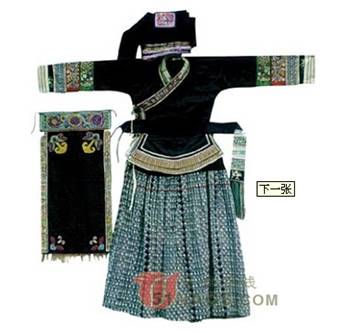
The Buyi people are noted for singing and dancing. The young people in love often express their affection by songs. The also created palys with rich Buyi flavor, which derives from the traditional folk opera “Ba yin zuo chang” (sitting and singing with eight tones)
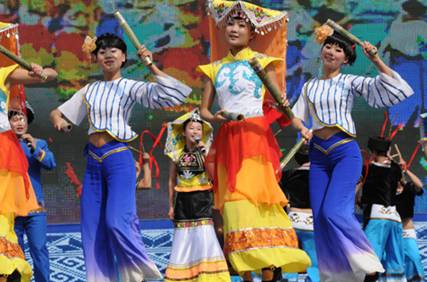
The Buyi people take rice and corns as their principle food and sour soups or sour fish are very poplar too. They also drink a lot. There are lots of festivals for the Buyi people, such as Sanyuesan, Siyueba, Liuyueliu, New Rice Tasting Festival and Chabai Song Festival.
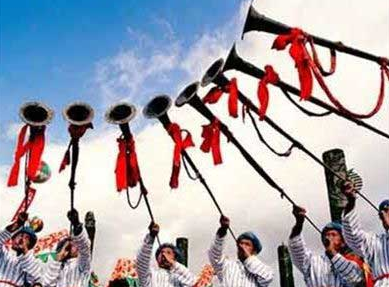
The typical Buyi style handcrafts in Guizhou include batik works and bamboo weaving products like bamboo mat and Chinese hats, which are noted for the simple colors, fine patterns and creative designs. The home-made cloth of the Buyi people is also very popular.

The Culture of the Dong Nationality in Guizhou
The Dong Nationality has a long history. Now most of the Dong people can use the language of the Han people. Most of this ethnic group resides in Guizhou, accounting for 55 percent of its population. The Dong people tend to live together over a vast area while cluster by families or as clans in villages.
The Dong’s villages are set up along rivers and near mountains. The villages are surrounded by towering ancient trees, which look very pretty. Dong’s houses are typical wooden stilt --- house with outer corridors. These buildings are standing together and facing different directions. Walking on the winding path in the villages, the new comers are really hard to find a way out.
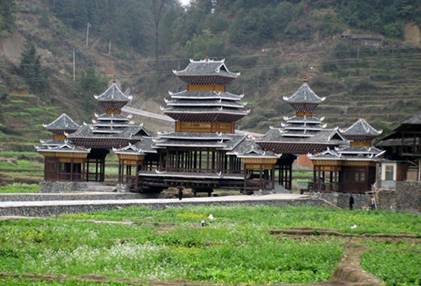
The Dong people are really experts at architecture, whose best-represented masterpieces are the Drum Towers and the “Wind and Rain” Bridges. As the landmarks of the Dong’s villages, they have fully exemplified the culture of the Dong.
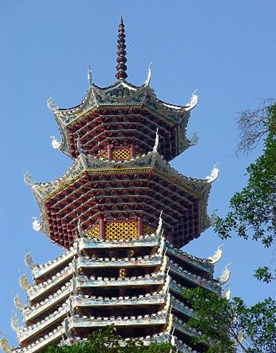
There are distinct differences between men’s and women’s costumes and women’s costumes and they always vary by areas. Generally, the Dong women wear black pleated skirts and puttees while, in some areas, they wear trousers, aprons, belts and upturned cloth shoes.
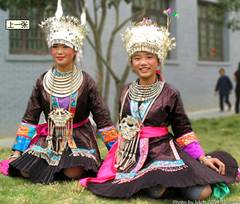
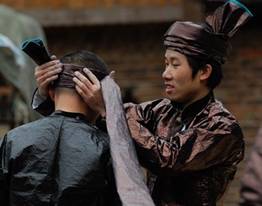
The Dong is essentially an agricultural group. They mainly plant rice and their sticky rice is most well known. Rice, especially the sticky rice, is the principle food for the Dong and they eat grain sometimes. The main festivals are the Dong’s New Year, Sanyuesan, the Jisha, the New Rice Tasting Festival.
The Dong’s area is always reputed as “the hometown of poems and the ocean of songs”. The Big Song, with its various topics, holds the most important and unusual position in the Dong’s traditional culture. As a kind of polyphonic folk songs, the Dong’s big songs have free rhythm and perfect harmonies.
